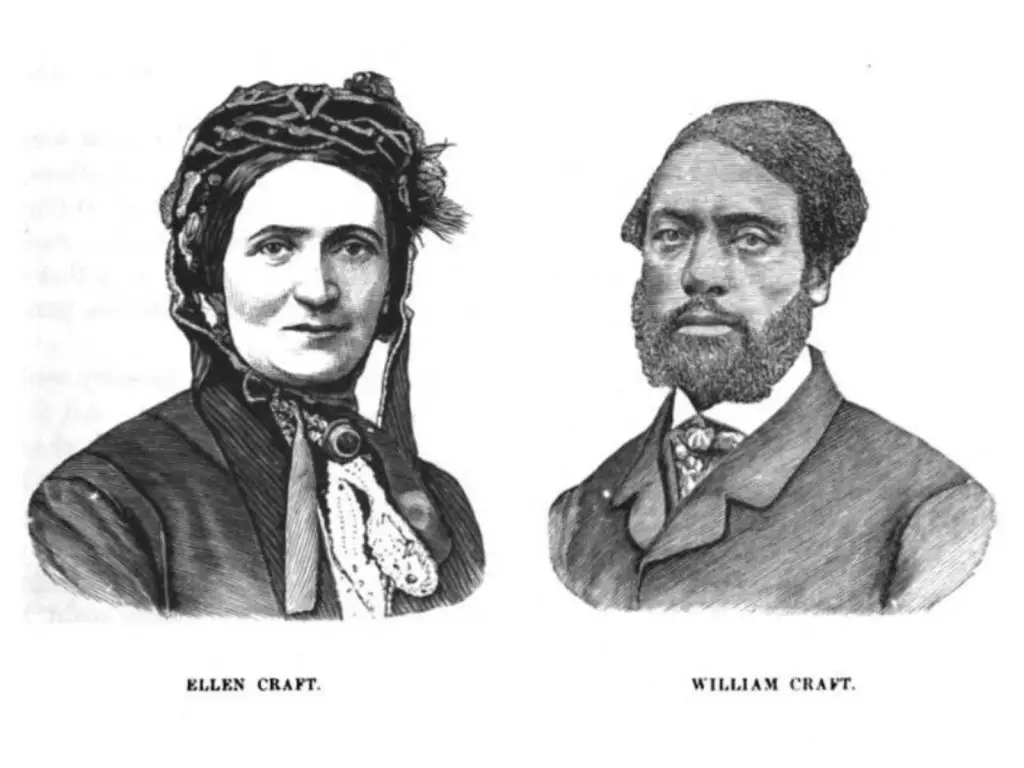Imagine having to disguise yourself as the opposite gender, fake a disability, and act like you own your spouse just to taste freedom. That’s exactly what Ellen and William Craft did in 1848. Their escape from slavery was not just bold. It was brilliant, theatrical, and so unbelievable it could pass for a movie plot.
A Marriage Built on Strategy
Ellen was light-skinned, so much so that she could pass as white. Born to a Black woman and her white enslaver, she spent her early years watching the people around her suffer the brutal realities of slavery. William, born into bondage too, was clever, observant, and fiercely determined. When the couple married, they began plotting their escape almost immediately. They knew the system would never let them go quietly, so they planned something that relied entirely on deception.
The Disguise That Fooled the South
Here’s where things get wild. Ellen dressed as a white man, complete with jacket, top hat, and a sling to hide the fact she couldn’t write (a crucial skill for a traveling gentleman). She pretended to be a rich, ailing slave owner. William played her loyal servant. That’s how the two of them traveled, in plain sight, through the heart of the American South. They bought train tickets. Stayed at inns. Spoke with conductors and fellow travelers. All while carrying forged papers and walking through danger.
Think about that. Two enslaved people pretending not only to be free but to be part of the very system that kept them in chains. It was risky. If caught, they could’ve been beaten, sold, or worse. But somehow, it worked.
The Tension Builds
Every stop along the way brought new challenges. In Savannah, a train conductor nearly exposed them. In Charleston, they shared a waiting room with a friend of Ellen’s enslaver. And yet, they kept going. Bluffing their way past every threat. A soft-spoken woman pretending to be a sickly man, and her husband pretending to be her property. It was both heartbreaking and brilliant.
Finally, after four tense days, they reached Philadelphia. Free soil. Their plan had worked. But even freedom wasn’t truly safe.
Not the End of the Story
In the North, they became famous. Abolitionists celebrated their ingenuity. But then the Fugitive Slave Act of 1850 passed, making it legal for slave catchers to hunt escaped slaves even in free states. So the Crafts had to flee again, this time to England. There, they lived for nearly 20 years before returning to the U.S. after the Civil War.
Their story is more than just a daring escape. It’s about love, strategy, courage, and survival. It’s about two people outwitting a system designed to break them.
And in a country still wrestling with the legacy of slavery, their tale still whispers something powerful: don’t underestimate the will to be free.
Sources:
1. Smithsonian Magazine – The Great Escape From Slavery of Ellen and William Craft
2. English Heritage – Craft, Ellen (c.1826–c.1891) & Craft, William (c.1824–1900)
3. World History – Ellen and William Craft’s Escape Through Canada

